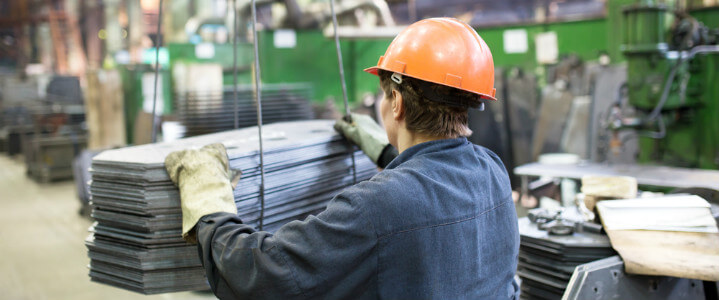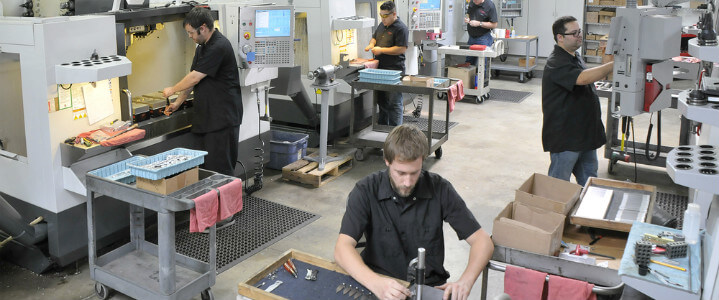Ergonomics in a manufacturing environment is such a vital part of workplace safety. It’s easy to overlook everyday actions that could lead to long term, cumulative disorders and injuries. Because we don’t see the effects upfront, our mind may conclude that there’s no reason to worry.
Today, we’ll share some ergonomic tips for manufacturing. Over time, workers may develop tendonitis, carpal tunnel, and severe back injuries. Our jobs are demanding. Awkward postures, high impact, vibration, heavy material handling, and repetitive, continuous movements can contribute to these serious issues.
How do you establish a production ergonomics plan that works? Keep reading for some key components.
Ergonomics Best Practices for Manufacturing
This is a necessary, proactive piece of management. If you want to reduce the risk of cumulative trauma disorders (CTDs), you’ll have to organize a system. The process will be just as important as all other workplace precautions. There’s no quick-fix.
Once the damage has been done, it’s highly likely that it’s irreversible. So, it’s best to begin as soon as possible.
Ergonomics Checklist for Manufacturing
When is the best time to get started? Immediately. This short ergonomics checklist for manufacturing will help you.
- Manage the lifting and transportation of materials.
- Assess your manufacturing work environment.
- Examine worker posture when performing tasks.
You may realize already that you need assistance. There’s no shame in that. It’s great that you’re understanding the need for change or overall improvement. We think you may find it’s best to use safety consulting companies like Safety by Design. We’re experts in ergonomic ideas for manufacturing. With years of experience, we’ll get your ergonomic plan in place and running quickly.
Manage the lifting and transportation of materials.

Manufacturing environment workers are no strangers to moving materials. But what are the best practices when you’re transporting materials from here to there? You’ll need to employ lifting aids and transportation devices. Assess tasks and eliminate the frequency of lifting and shifting materials. Always opt for pushing instead of pulling. Reduce the distance of travel if possible.
Assess your manufacturing work environment.
This can be an easier fix in your workplace, but you must understand what to look for. Monitor employees in action. This is about your different workstations. Desk setup and even anti-fatigue flooring should be considered.
Assess worker activity. Bending, reaching, leaning, sitting, and standing should be evaluated. Adjust the work environment to reduce the risk of injury if necessary.
Examine worker posture when performing tasks.
More observation! Watch for unnatural positions among your employees. Their bodies could be experiencing stress. Think about the height of work surfaces and tool accessibility. Use knee pads instead of having your workers squat. Reduce standing by bringing in chairs, stools, etc.
3 Common Ergonomic Tools for Manufacturing
We think you’ll likely recognize some of these tools. But are you using them? Do your workers understand that cutting corners could contribute to long term damage? It’s your job to ensure they’re trained. You must also ensure streamlined design, and actively manage your ergonomic plan for manufacturing.
1. Lifting Aids & Assist Devices
Lifting aids reduce awkward positions for workers. They can even eliminate bending, twisting, and squatting. Sometimes, mechanical devices may be your best option.
2. Transportation Devices
Think about wheels in the workplace. Carts, conveyors and AGVs (automated guided vehicles) are all common ergonomic tools for manufacturing settings.
Maintaining these devices must also be factored in. That’s a huge part of safety as well. If a cart isn’t functioning properly, the damage to a worker’s body could be compounded.
3. Extension Poles & Adjustable Height Platforms

These can eliminate reaching and straining. You also reduce the chance of materials falling from shelves, docks, etc.
Use Safety by Design’s safety training in Houston. We understand work environments and the answers to your ergonomic questions. If you’re feeling overwhelmed with this aspect of management, don’t. It’s one of our safety specialties.
3 Effective Ergonomic Stretches for Manufacturing
Getting active can also help. Especially if workers are seated or stationary for long periods of time. Give these stretches a try. They can make a difference in the long haul!
Windshield Wiper
This can be done seated or standing. Move your head from side to side. It’s like you’re watching wipers on the windshield. Go back and forth 5 times.
Overhead Stretch
Employees can complete this stretch while sitting or standing. Interlace your fingers with palms up, push arms toward the ceiling, then push them back slightly. Hold for five seconds and repeat five times.
Leg Lifts
You’ll need to hold to a chair (or some other stable item) for this one, but it’s easy. Lift one leg back at a time. Raise your foot backward slowly and then immediately bring it down again. Lift the other foot/leg. Repeat until each leg has been lifted five times.
Safety by Design Can Improve Your Safety Management
Here’s the rundown for your ergonomic plan:
- Issue a company policy statement.
- Conduct meetings in which plans are discussed.
- Set team goals.
- Commit to your goals and necessary resources.
It’s a very basic outline, but we can help you from start to finish. The best time for this pressing workplace issue is now. Don’t wait another minute to take the necessary steps to keep your workers safe and healthy.
Contact the Safety by Design team today to schedule a consultation!



